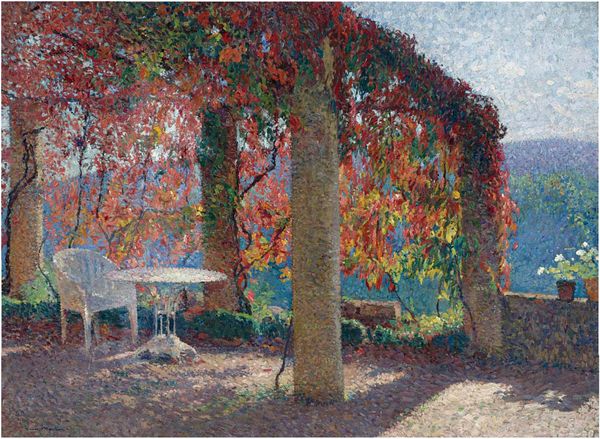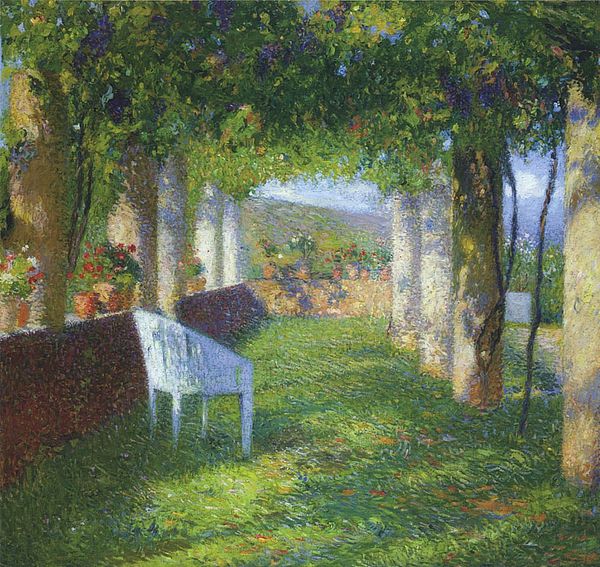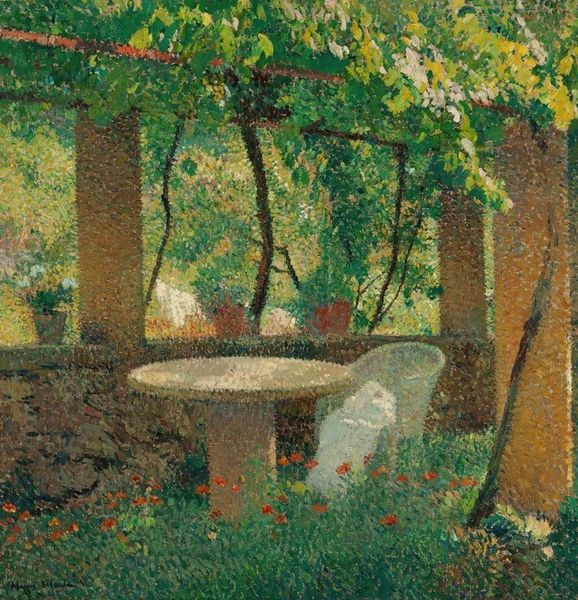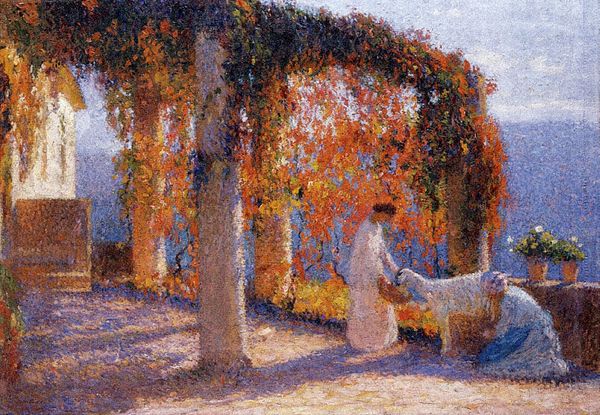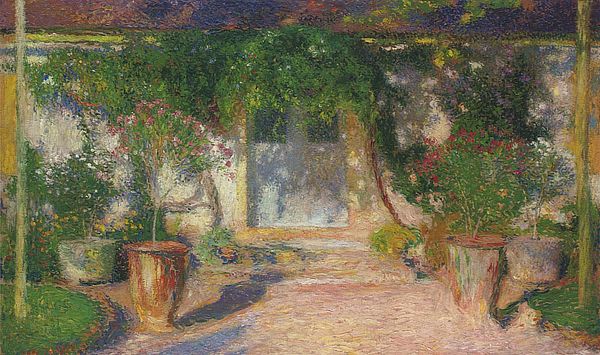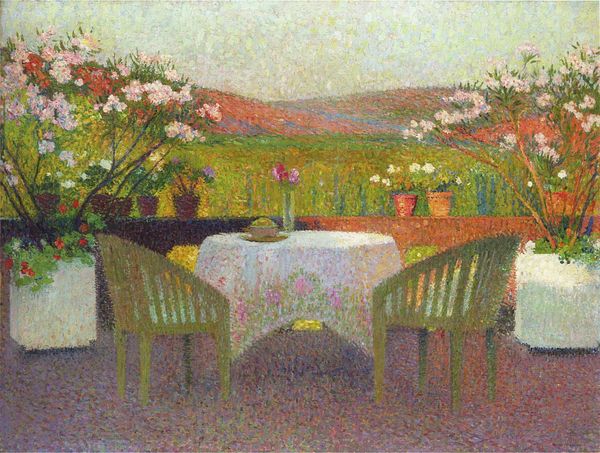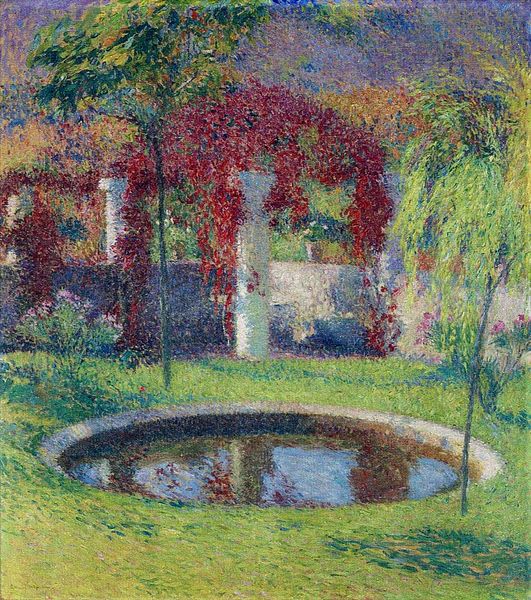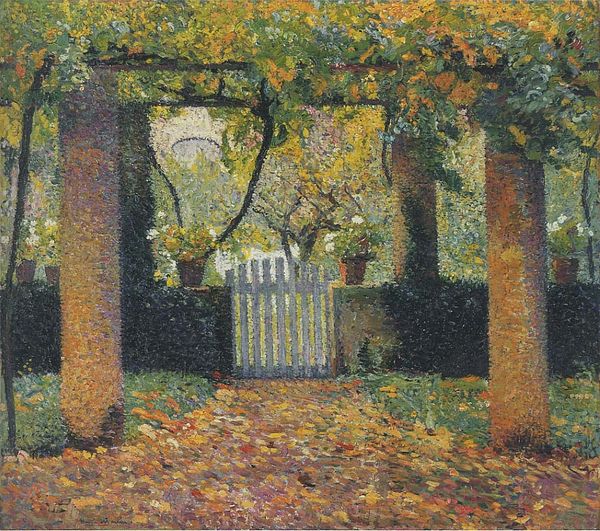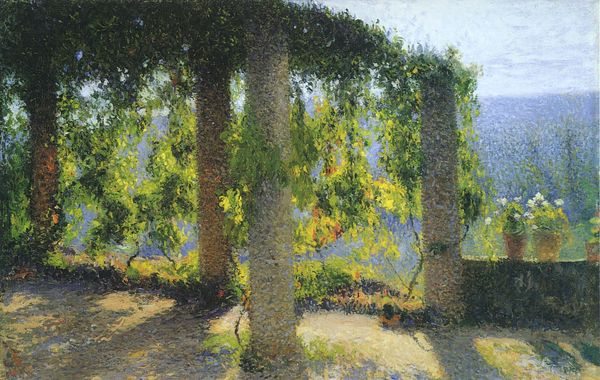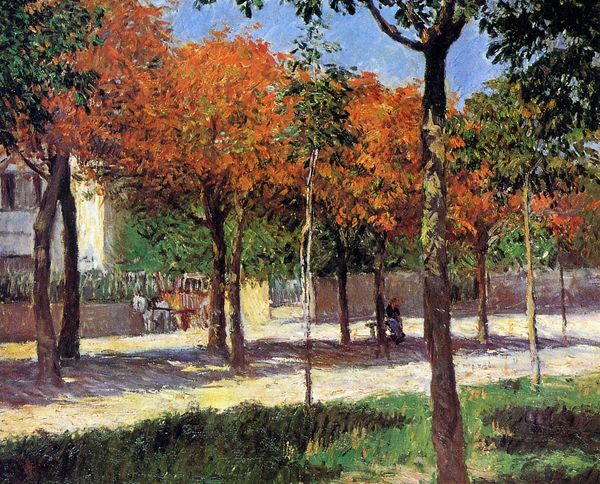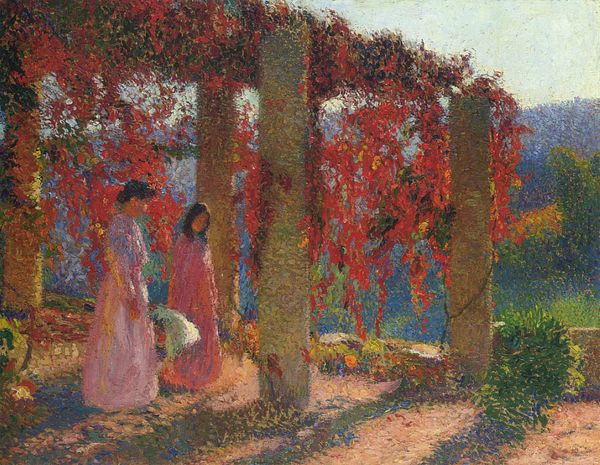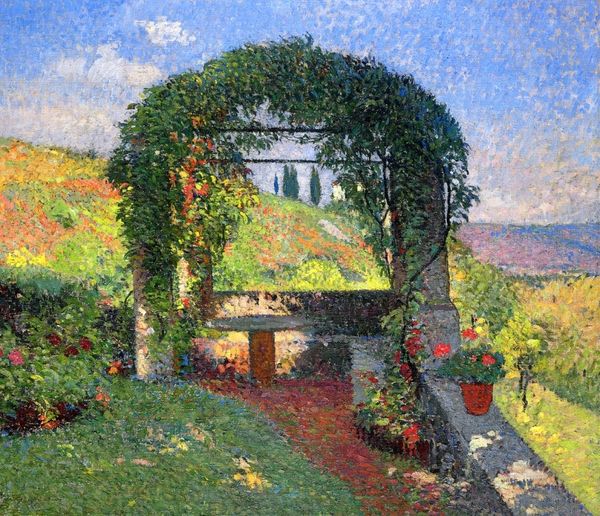
painting, plein-air, oil-paint
#
painting
#
impressionism
#
plein-air
#
oil-paint
#
landscape
#
impressionist landscape
#
geometric
#
column
Copyright: Public domain
Henri Martin's "The Pergola" invites us into a space where nature and domesticity intertwine, rendered with an almost dreamlike quality. The pergola itself, draped with vibrant foliage, acts as a symbolic threshold between worlds. Throughout history, the motif of the garden has been a potent symbol, often representing paradise, a retreat from the world, or a space for contemplation. Think of the Garden of Eden, or the enclosed hortus conclusus of medieval art, both spaces of idealized beauty and spiritual significance. Here, Martin presents his pergola, less as a sacred space, and more a secular sanctuary. The table set for refreshments suggests leisure, friendship, and intimate conversation. Consider the symbolism of the vine: since antiquity, a symbol for connection, abundance, and transformation, winding its way through cultures from the Dionysian rituals of the Greeks to Christian iconography. The vine represents not just physical nourishment but also the emotional and spiritual bonds that sustain us. Its presence evokes a sense of growth, renewal, and the cyclical nature of life. "The Pergola" thus becomes a space where the subconscious finds expression. The memory of nature resurfaces, not as a direct representation, but as a symbolic space infused with the artist's longing for tranquility.
Comments
No comments
Be the first to comment and join the conversation on the ultimate creative platform.
